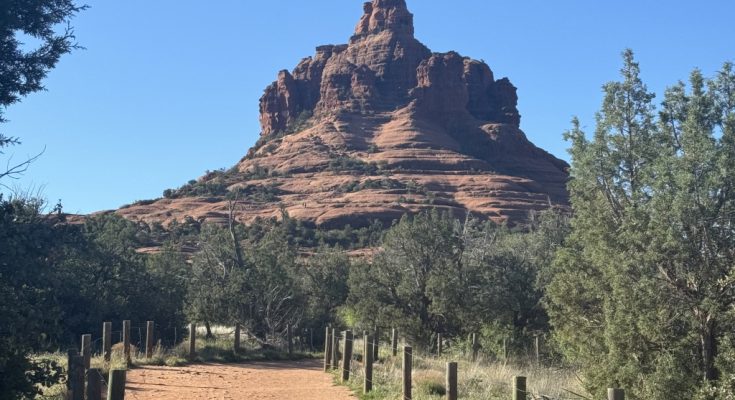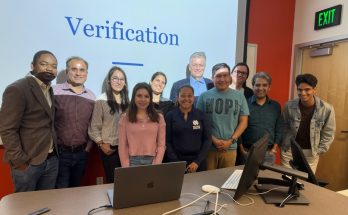<Bell Rock is a famous rock formation that rises 500 feet into the air and is considered a
vortex site. Its name comes from its bell-like shape.>
Dennis Andres first heard about the city of Sedona from his mother. The 26-year-old New Yorker was moving to Arizona to study at Thunderbird School of Global Management, and his mom, who traveled with him, requested to visit Sedona. While driving around, he pulled over at a rock formation called Bell Rock. Dennis was amazed by its beauty, so he got out of the car and ran up the rock. The higher he went, the better he felt. When he returned to the car, he saw his mother in tears. He asked her what was wrong, and she replied that she had never been so happy before.
“We asked people if something was happening in Sedona. And they would always respond it is the vortex. So I asked, what is a vortex? And every single person gave me a different answer. I made a vow that I would figure it out someday.” Years later, in 1995, Dennis Andres left his job as a financial consultant for the World Bank in Kazakhstan and moved permanently to Sedona, where he became a tour guide and a writer. Out of his four books, two are about the vortex: “What Is a Vortex?” (2009) and “Experience The Vortex” (2023).
So, what is a vortex? Page Bryant, a psychic who lived in Sedona in the late 1970s and early 1980s, coined that term to refer to a place of energy. Bryant identified specific locations in the city (Bell Rock, Cathedral Rock, Airport Mesa, and Boynton Canyon) and claimed the energy was physical. However, she was not the first person to feel it. The psychic researcher Dick Sutphen went to Sedona before her and brought people to spiritual retreats. For Sutphen, it is a city with psychic energy.
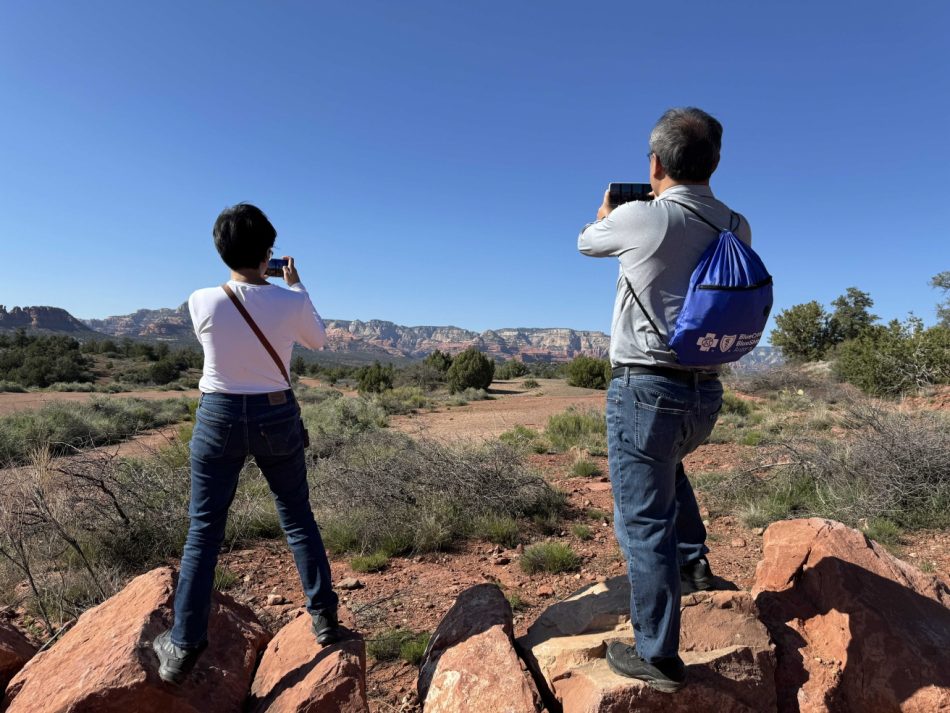
come to experience the vortex.
“What this energy is is the real question. Sedona is a place of spiritual energy. We cannot measure it with mechanical devices; we can only measure it with the human body. I can explain why some people feel this energy and others do not. You do not have to believe in it, and you do not have to reject it either,” states Dennis.
Over the years, he has interviewed thousands of people to understand their experiences. Based on that informal research, he created the chart below, which is a predictive model of how someone would feel in Sedona.

“There is no scientific evidence for a vortex. In fact, I am not even aware of a clear definition of it. People say energy but do not mention what kind they are referring to. Energy manifests itself in magnetism, heat, and radiation. They are all different forms of energy. People use that term without really understanding what it means. If they want to believe in it, that is fine. It is very good for tourism, which Sedona mostly lives on. However, as a scientist, I have not been made aware of any experiments or evidence that support the idea of a vortex”, affirms Dr. Steven Semken, a geologist and professor at the School Of Earth and Space Exploration at Arizona State University.
Energy is defined by science. Dr. Semken explains it as the capacity to do work and make changes happen. “Energy exists, and it is exchanged among different forms. But it is conserved. You can not create it, make it, or destroy it. You can just convert it from one form to another. For instance, when you eat food, there is chemical energy in it. Your body digests the food, and that produces heat. That is heat energy,” he says.
Since 2018, Brad has worked as a tour guide four days a week for half the year. Does he believe in vortexes? “They do not come up and hit you on the head and say: I am a vortex. I think you have to be open-minded because having an open mind in life is a good thing anyway.”
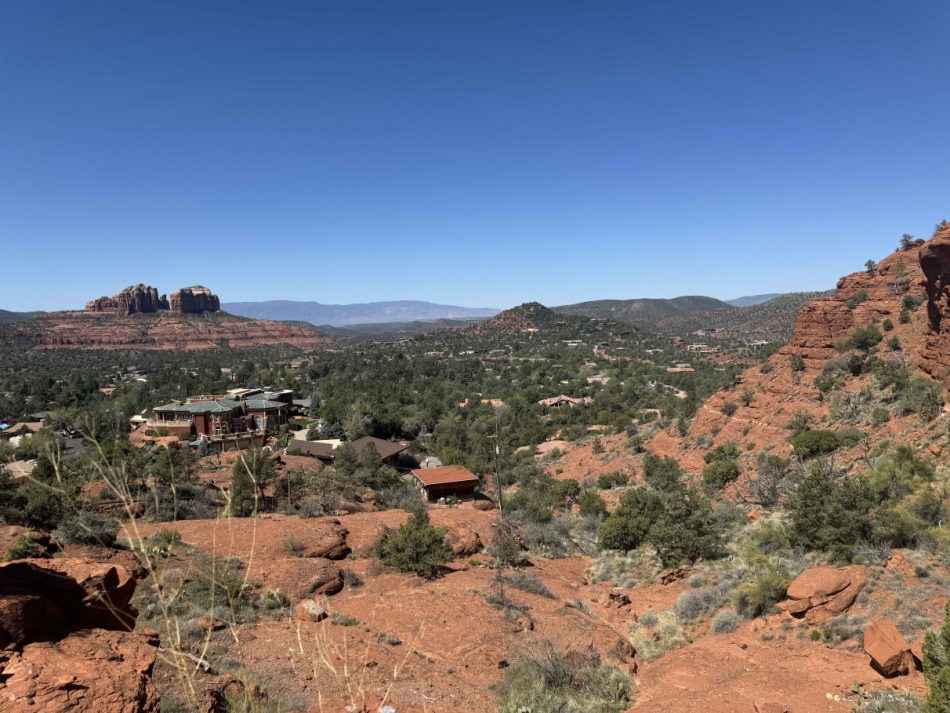
which includes over 400 miles to hike and bike.
Brad has heard people talking about electromagnetism, magnetism from the Earth’s core, female energy, and male energy when describing a vortex. Although he believes these notions may be true, he knows there is no scientific proof of any of it. “All I can say is that sometimes I feel a chill or goosebumps. I do not know if that is a vortex energy, but it is some type of energy. So I just go with it. It might be the beauty of the rocks and surrounding areas. When someone says they feel something, I think that is remarkable. You can not tell that person they do not feel something because it is a personal experience. And people come from all over the world to experience it”, he reflects.
According to its official website, about three million tourists visit Sedona annually. How many believe in the vortex? The truth is that nature, with or without a vortex, has the power to move us with its immensity and beauty.
Next stop? Sedona
It happens. Suddenly, you realize monotony has taken over your life. What to do? A quick getaway can give you the novelty and thrill you have missed. If you want to feel your heart pumping, visit Sedona. Located just two hours away from Phoenix by car, this city of almost 10,000 residents was founded in 1902 and is known for its red rocks, green vegetation, more than 200 hiking trails, vortexes, and alternative healing.
“Sedona is beautiful, especially the red rocks and the pine trees. What I like the most was hiking and looking around at the scenery,” says Seoka Hwang, a South Korean tourist.
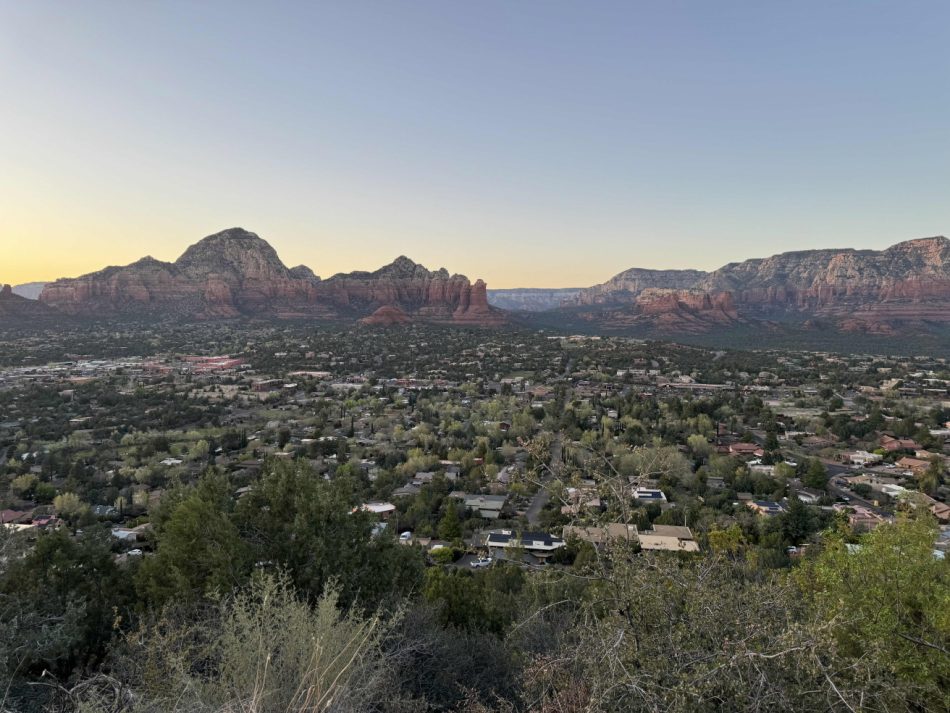
northern region of Arizona.
The northern region of Arizona is called the Colorado Plateau, characterized by a big stack of rock layers formed over millions of years of geologic activity. Sedona is situated on the Mogollon Rim, which marks the edge of this plateau. The city’s spectacular and dramatic landscape is mainly attributed to its red color caused by iron oxide.
Besides the stunning views, Tufan Neupane enjoyed the peace he experienced during his trip. He found the city to be relaxing and spiritual. “I visited the Amitabha Stupa, which was particularly meaningful to me since I came from the birthplace of Lord Buddha in Nepal. Interestingly, being in Sedona made me feel at home.” The Amitabha Stupa & Peace Park is a place for prayer and meditation owned by a Tibetan Buddhist temple.
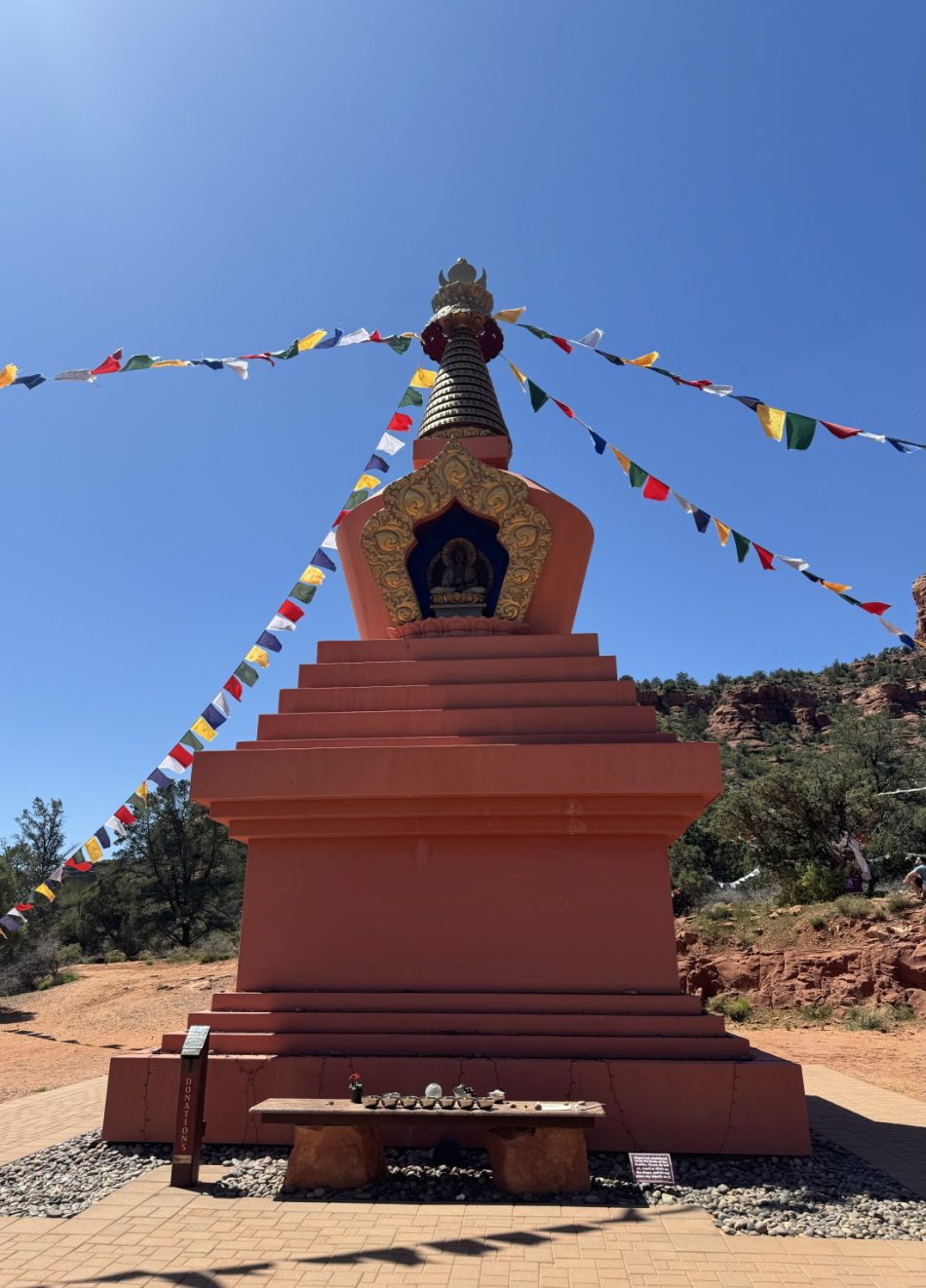
from dawn to dusk.
For Riaz Ul-Haq, a tourist from Pakistan, Sedona is the perfect summer destination. “The weather is very good, especially when coming from Phoenix. It is also green and a healing area. This is why I strongly recommend staying here.”
Alternative healing treatments abound in downtown Sedona, from hypnotherapy to reiki and chakra balancing, earning the city its reputation as a “spiritual Mecca.” Wherever you look, there is something for everyone.
From a young age, Dr. Steven Semken was fascinated with rocks, landscapes, outdoor activities, and science. Therefore, it was only natural for him to study geology, and it is no surprise that he loves Sedona and the northern region of Arizona. “You get a sense of awe because it is a large landscape, great for contemplation. You also cannot help but admire the beauty of the rocks. There is no question that those red rocks are reminiscent of Mars. This town is culturally rich so that many things will excite you,” he sums up. It is time to listen to the expert and start planning your Sedona getaway.

